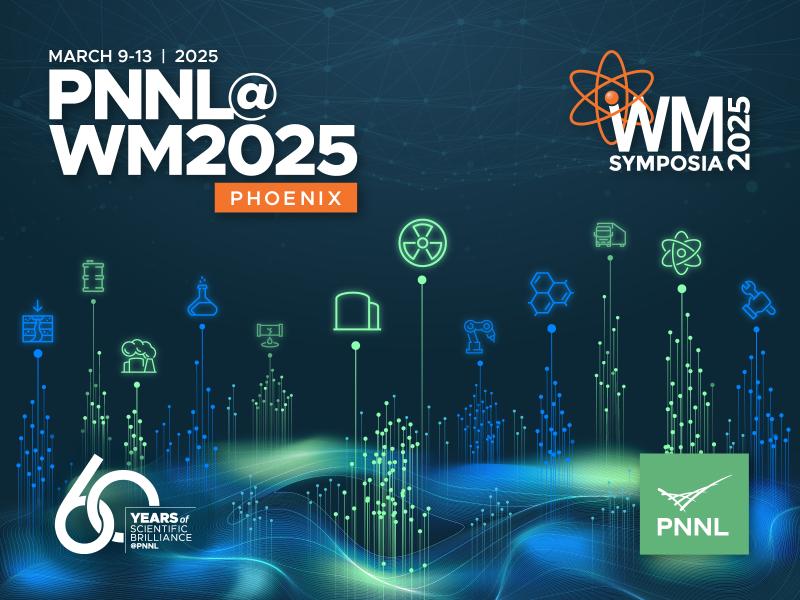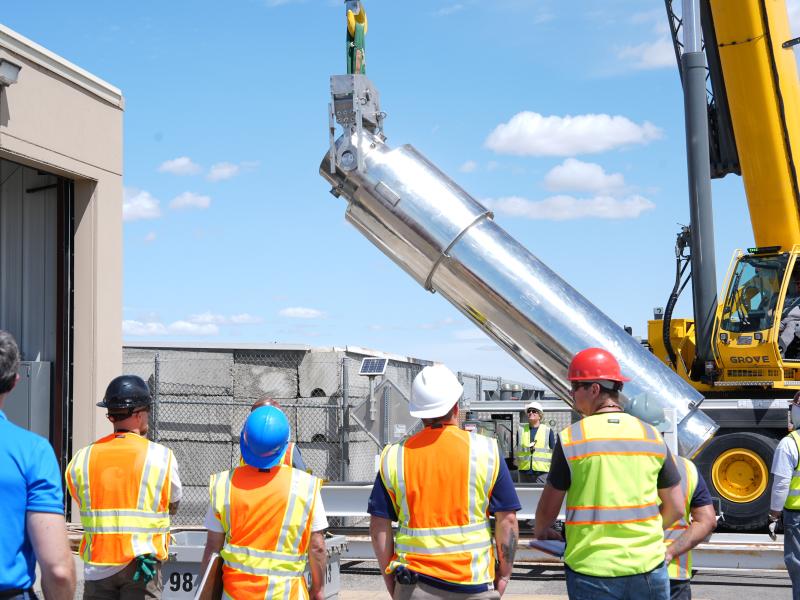
Nuclear Energy
Nuclear Energy
Advancing nuclear power
for a reliable, safe,
and secure energy future
Advancing nuclear power
for a reliable, safe,
and secure energy future
PNNL led the environmental review for the U.S. Nuclear Regulatory Commission operating license for the Watts Bar Nuclear Unit 2 in Tennessee. The review evaluated a full scope of areas, ranging from aquatic ecology to radiological impacts to cultural resources to noise. The NRC approved the Tennessee Valley Authority's application for facility operating license for a second light-water nuclear reactor. Read more here.
Nuclear energy comes from splitting atoms to produce heat that can be used to generate electricity. As an example, most nuclear reactors operating today heat water and produce steam that then is used to turn a turbine to generate electricity. Nuclear energy protects air quality by producing massive amounts of carbon-free electricity.
At PNNL, experts use decades of multi-disciplinary expertise to accelerate the domestic deployment of advanced reactors and innovative nuclear technology, sustain and extend the lives of the existing commercial nuclear reactor fleet, develop new technologies for the safe, secure, and economic recycling of irradiated nuclear fuel, enable the safe storage, transportation, and disposal of spent nuclear fuel, identify and evaluate opportunities for the carbon-free nuclear energy in the 21st century electric grid, and enhance our country’s nuclear industry to compete globally. View the PNNL Nuclear Energy Overview Brochure to learn more.
Stay connected and subscribe to Nuclear@PNNL. Each e-newsletter issue highlights the expertise of our researchers, their contributions to the nuclear mission space, and our state-of-the-art research facilities where discoveries and advancements are made.
Benefits of nuclear energy
The first commercial nuclear power stations started operation in the late 1950s, and nuclear plants now are operational in many countries worldwide, with nuclear energy powering communities in many U.S. states. Nuclear energy can meet the growing need to increase generating capacity without the need for using carbon-emitting fossil fuel units, complementing other carbon-free energy generating technologies. The federal government estimates use of carbon-free nuclear energy in America avoids some 650 million metric tons of carbon dioxide emissions per year. Nuclear energy also contributes to many non-electric applications, ranging from the medical field to space exploration.
Considering its many contributions to society, continuing research focused on nuclear energy is critical to further inform actions involving its use, gather evidence for theories, and contribute to developing existing nuclear energy knowledge.
National research is primarily focused on maintaining the existing fleet of nuclear reactors, developing new advanced reactor technologies, and improving the nuclear fuel cycle to increase sustainability of our energy supply and strengthen the U.S. economy.
Nuclear energy expertise at PNNL
PNNL has a long heritage of supporting the nation’s nuclear energy programs, dating back to the Manhattan Project. A combination of science and technology expertise, a unique Hanford history, and highly equipped and modern facilities enable laboratory experts to bring substantial resources to helping solve the nation's nuclear energy challenges. We continue to utilize our broad and diverse nuclear energy expertise and capabilities to advance nuclear energy technologies.

